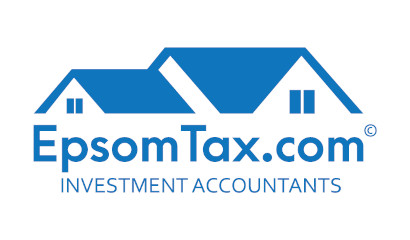CLOSING A COMPANY IN NEW ZEALAND
Closing a Company in New Zealand
Closing a company in New Zealand is a process that involves careful planning, legal compliance, and coordination with government authorities. Whether your decision to close stems from completing the company’s purpose, financial difficulties, or a strategic shift, understanding the necessary steps is crucial. This guide provides a detailed roadmap to help you navigate the process, from passing resolutions to obtaining approvals and completing final formalities.

Understanding the Need for Closure
The decision to close a company should not be taken lightly. Before initiating the process, ensure you understand the reasons for closure and the implications for stakeholders, including shareholders, employees, and creditors.
Some common reasons to close a company include:
- Completion of the business purpose.
- Financial insolvency.
- A decision to consolidate operations.
- Voluntary choice by shareholders or directors.
Once the decision has been made, it’s essential to follow the correct legal steps to ensure compliance and avoid future liabilities.
Step 1: Pass a Resolution
Shareholders’ Resolution or Directors’ Resolution
The process of closing a company begins with a formal resolution. Depending on the company’s structure and operational status, the type of resolution required may vary:
- Shareholders’ Resolution: If the company has active shareholders, a special resolution must be passed. A special resolution typically requires at least 75% of shareholders to agree to the company’s closure. This resolution must be recorded in the company’s minutes.
- Directors’ Resolution: For companies without active shareholders or where shareholders have delegated authority, the board of directors can pass a resolution to close the company. This decision must also be formally documented.
The resolution should specify the reasons for closure and outline the next steps in the process. Keep in mind that the resolution must align with the company’s constitution and the Companies Act 1993.
Step 2: Settle Outstanding Liabilities
Before proceeding further, ensure all outstanding liabilities are settled. This includes paying off creditors, finalizing employee entitlements, and addressing any other financial obligations. Failing to resolve these issues can result in legal complications and delay the closure process.
Step 3: Obtain a Letter of No Objection from IRD
What is a Letter of No Objection?
The Inland Revenue Department (IRD) plays a critical role in the company closure process. A Letter of No Objection is a document issued by the IRD confirming that the company has no outstanding tax obligations. This is a mandatory requirement for deregistration.
How to Apply for the Letter
- Prepare Financial Records: Ensure all tax returns, including GST, income tax, and employer-related returns, are filed up to date.
- Submit an Application: Contact the IRD and request a Letter of No Objection. Provide all necessary documentation, including the company’s IRD number and any outstanding tax details.
- Address Any Issues: If the IRD identifies unpaid taxes or discrepancies, resolve them promptly to avoid delays.
Once the IRD is satisfied that all tax matters are in order, they will issue the Letter of No Objection, enabling you to proceed with deregistration.
Step 4: Apply for Deregistration at the Companies Office
Preparing the Application
The New Zealand Companies Office oversees the formal deregistration of companies. To initiate the process:
- Complete the Online Application: Log into the Companies Office website and access the deregistration section.
- Submit Supporting Documents: Provide the following:
- A copy of the shareholders’ or directors’ resolution.
- The Letter of No Objection from the IRD.
- Any other required documentation, such as evidence of settled liabilities.
- Confirm Contact Details: Ensure your contact information is accurate, as the Companies Office may need to reach you during the process.
Public Notification
Once the application is submitted, the Companies Office will publicly notify the proposed deregistration. This allows creditors or other interested parties to raise objections if necessary. The public notification period typically lasts for 20 working days.
Step 5: Await Confirmation
The entire process – from submitting the application with IRD to receiving confirmation of deregistration from Companies Office – usually takes about three months. During this time, ensure you monitor communications from the Companies Office and address any queries promptly.
Once the deregistration is approved, the company will be officially removed from the Companies Register, and its legal existence will cease.
Common Challenges and How to Address Them
Unresolved Liabilities
If the company has outstanding debts, these must be addressed before deregistration. Negotiating payment plans or seeking professional advice can help resolve such issues.
Disputes Among Shareholders
Disagreements between shareholders can complicate the process. Engaging a mediator or legal professional may help resolve disputes and facilitate a smoother closure.
Delays in Obtaining the IRD Letter
Ensure all tax filings are up to date and any queries from the IRD are addressed promptly to avoid delays in obtaining the Letter of No Objection.
Final Considerations
Closing a company is a significant decision that involves multiple steps and legal requirements. It’s advisable to seek professional guidance, such as from an accountant or legal expert, to ensure compliance and minimize risks.
By following the steps outlined in this guide, you can navigate the closure process efficiently and with confidence. Remember, while the process typically takes about three months, proactive planning and attention to detail can help avoid unnecessary delays.
Recent Posts
Pages
Useful Links
Services
Contact Details
Phone: 0800-890-132
Email: support@epsomtax.com
Fax: +64 28-255-08279
EpsomTax.com © 2021
